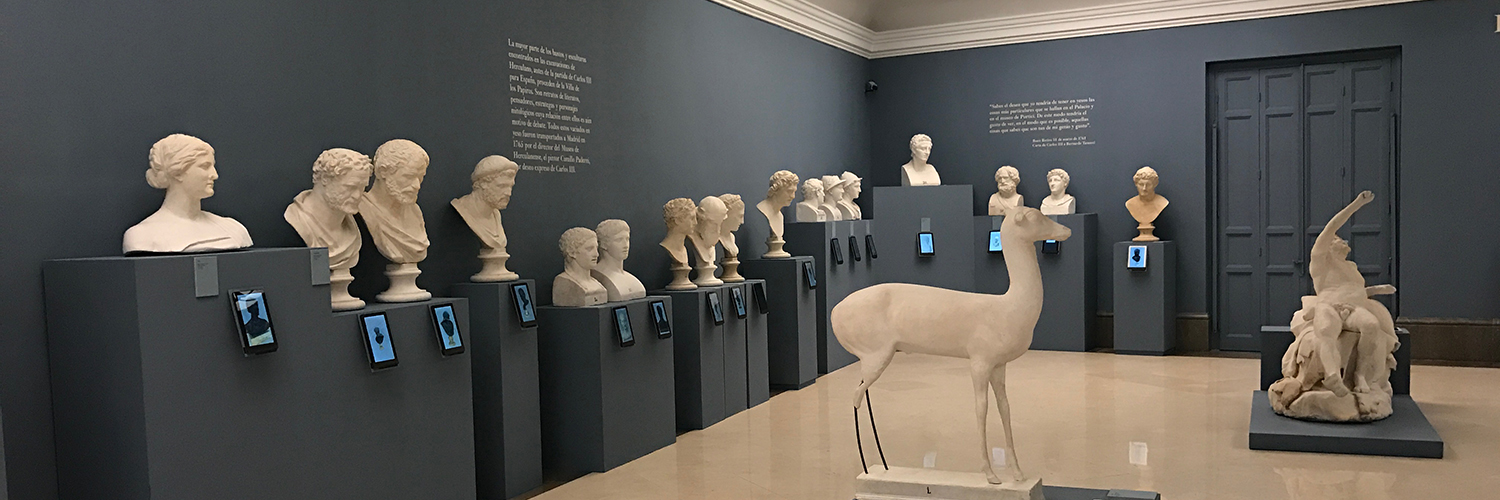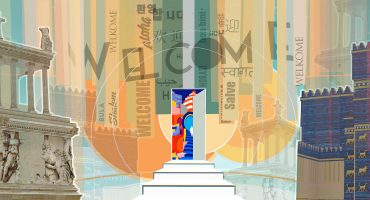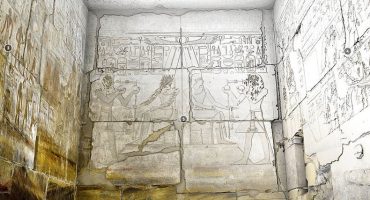This is part one of a two part article – read the second instalment here.
Hi, I’m Néstor F. Marqués, Sketchfab Master devoted to Cultural Heritage. As an experienced virtual archaeologist I’m well aware that virtual museum collections are getting more and more popular everyday, thanks, in part, to Sketchfab and their interest in cultural heritage. There are already more than 500 cultural institutions on Sketchfab, in fact, I helped get on board a few of them myself. But what happens when it comes to mix real museums and virtual pieces? Let’s find out.
Museums in a traditional way have always been spaces for contemplation and visual admiration of objects. Until the 20th Century, in fact, museums have been just big warehouses for lots and lots of accumulated objects pertaining to certain cultures or artists.

Gallery of views of ancient Rome. Giovanni Paolo Pannini. 1758. Louvre Museum.
Since the last century, thankfully, the concept has changed a lot for good, leaving the horror vacui storage rooms perception behind and starting to feel more like places for education, culture and knowledge. More importantly, museums have opened their doors and narratives to everyone, not just erudites and scholars. Culture is everyone’s right and access to it must be granted by museums.
In most recent times, technology has been increasingly important in the museums and heritage world, affecting in a positive way by making them see new perspectives and ways to reach out to the people and make acceptance of culture and heritage easier than ever for the general public.
Technology applied to museums has even changed the basic concept of these institutions where the motto was to see and now more and more we can see examples where this “see” is changing to “live”. Living experiences at cultural institutions has a very positive impact in the way people sees their own past and culture. Experiential learning is the key to get the best results out of general valuation of museums and cultural heritage.
Here’s an example of this kind of conceptualization applied to a real case scenario: the exhibition “Carlos III y la difusión de la Antigüedad” (King Charles the 3rd and the diffusion of Antiquity) held in Naples, Madrid and Mexico City from December 2016 to march 2017, in which I had a part in the technological approach.

Carlos III exhibition poster.
This exhibition focuses on telling the story of king Charles of Naples in the 18th century. He, who years later would become the king of Spain, started the first diggings of the remains of the ancient cities of Pompeii and Herculaneum -and others-, which were forgotten in time until that moment. The marble and bronze statues, extracted from the solidified lava from mount Vesuvius’ eruption in 79 AD, were used to decorate the king’s new palace at Portici and lately -when the palace was filled- to create a museum -in the old fashion we were talking about earlier-.
When king Charles had to return to Spain to become king in 1759, he ordered to make plaster-casts copies of all the statues they had uncovered to put them in his palace in Madrid. Ultimately, the casts ended up in the Royal Academy of Fine Arts where they served for teaching plastic arts to students. Other copies where sent to Mexico to serve the same purposes.
Nowadays, the original collection of roman marble and bronze statues is held at the Museo Archeologico Nazionale di Napoli (MANN) and the casts at the Royal Academy of Fine Arts (Madrid). The exhibitions premise was to show all the pieces -originals and casts- without moving them from their original locations. Thus, it was necessary to create 3D models of all the pieces to have them physically or virtually on show.

Carlos III exhibition room in Madrid.
The result was the display of one of the pieces with its correspondent in 3D model on Sketchfab -on tablets lent by Spanish technology company bq- to allow people to interact with it. This is the perfect way to show people the exhibition is not just for seeing the pieces, but to feel and experience them in new ways.
Of course, all these pieces are available on Sketchfab as you can see above. This is also a new way to experience and exhibition or museum. If you can’t physically go to the museum, you should be able to access it and explore it, at least partly, from wherever you want in a way that’s never been easier than it is today thanks to 3D visualization. Moreover, scholars and researchers around the world can benefit as well from the 3D documentation made available online for their studies, thus having a technique which not only favors cultural diffusion, but also documentation and study.
Continue reading in Part 2 and be sure to check out my Sketchfab profile as well as those of MANN and RABASF and follow all of them if you like.



